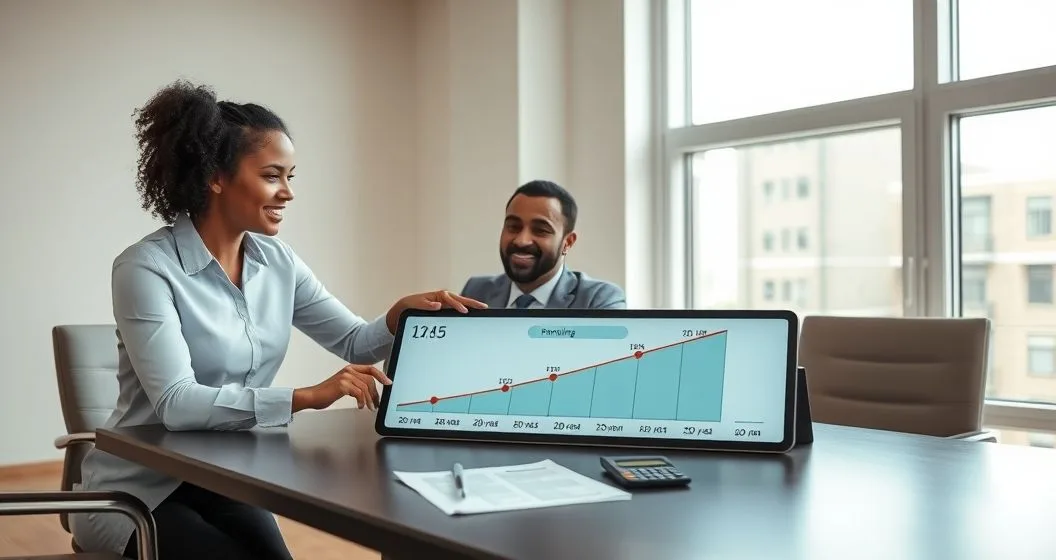Overview
Income-Driven Repayment (IDR) plans adjust Federal Direct Loan monthly payments to a percentage of your discretionary income so payments are affordable. Over time, these lower payments can produce a remaining balance that may be forgiven after a fixed period of qualifying payments. IDR is designed for borrowers who can’t reasonably repay loans under the standard 10-year schedule (U.S. Department of Education, Federal Student Aid).
How the forgiveness timeline works
- Payment percentage: Most IDR plans set payments at about 10–20% of discretionary income; specific formulas vary by plan (e.g., PAYE and REPAYE generally use 10%).
- Typical timelines: If you have only undergraduate loans, forgiveness often comes after 20 years of qualifying payments; if you have graduate or certain other loans, the period can be 25 years. Some borrowers may qualify earlier through programs such as Public Service Loan Forgiveness (PSLF), which requires 120 qualifying payments (10 years) (Federal Student Aid).
- Qualifying payments: Payments must be made under an eligible IDR plan, be on-time, and meet other rules (enrollment status, consolidation, service types). Gaps, deferments, or incorrect plan types can delay or disqualify payments.
Who is eligible
- Federal borrowers with Direct Loans are the primary candidates for IDR.
- Borrowers with FFEL or Perkins loans generally must consolidate into a Direct Consolidation Loan to access IDR.
- Parent PLUS borrowers can become eligible only after consolidating into a Direct Consolidation Loan (studentaid.gov).
Tax implications to plan for
- Historically, forgiven debt is treated as cancellation-of-debt income and may be taxable. That means a large forgiven balance could produce a significant federal (and possibly state) tax bill in the year of discharge (IRS, Cancellation of Debt Income).
- Exceptions and temporary exclusions can change tax outcomes; always check current IRS guidance and recent legislation before assuming tax liability.
- For borrowers expecting forgiveness, coordinate with a tax advisor well before the expected discharge year so you can manage withholding, estimated taxes, or other planning strategies.
Practical steps to keep your IDR forgiveness on track
- Enroll correctly: Apply for an IDR plan at studentaid.gov and confirm your loan type and servicer after enrollment.
- Recertify annually: Submit income documentation every year; missed recertification can change your payment and interrupt qualifying-payment counts.
- Track qualifying payments: Keep records (pay stubs, tax returns, payment history) and consider the guidance in our article on organizing documentation: Student Loan Forgiveness Documentation: Organizing Records for Faster Approval (https://finhelp.io/glossary/student-loan-forgiveness-documentation-organizing-records-for-faster-approval/).
- Consider consolidation carefully: Consolidating FFEL or Perkins loans may be necessary but can reset your qualifying-payment clock; evaluate trade-offs.
- Use servicer help and get confirmations in writing when possible.
Common mistakes I see in practice
- Assuming low or zero payments mean you’re accruing qualifying payments when you may not be enrolled in an eligible plan.
- Forgetting to consolidate older loans (FFEL/Perkins) before applying for IDR, which can make payments ineligible.
- Failing to recertify income annually and losing credit for what you thought were qualifying payments.
Related reading and tools
- Loan forgiveness eligibility specifics: Loan Forgiveness Eligibility for Income-Based Repayment Beyond PSLF (https://finhelp.io/glossary/loan-forgiveness-eligibility-for-income-based-repayment-beyond-pslf/).
- Tax issues after discharge: Tax Consequences of Loan Forgiveness: What You Need to Know (https://finhelp.io/glossary/tax-consequences-of-loan-forgiveness-what-you-need-to-know-2/).
Bottom line
IDR plans can make monthly payments affordable and — with 20 or 25 years of qualifying payments — lead to forgiveness of any remaining federal student loan balance. However, paperwork, plan choice, consolidation decisions, and tax rules matter. In my work advising borrowers, the single best practice is to document everything, recertify on time, and consult a tax professional before the expected forgiveness year.
Authoritative sources
- U.S. Department of Education, Federal Student Aid: https://studentaid.gov
- Internal Revenue Service (IRS) — Cancellation of Debt Income: https://www.irs.gov
- Consumer Financial Protection Bureau (CFPB) — Managing Student Loans: https://www.consumerfinance.gov
Disclaimer
This article is educational and does not constitute tax, legal or personalized financial advice. Rules for IDR, forgiveness, and tax treatment can change—consult your loan servicer and a qualified tax or financial advisor for guidance tailored to your situation.



